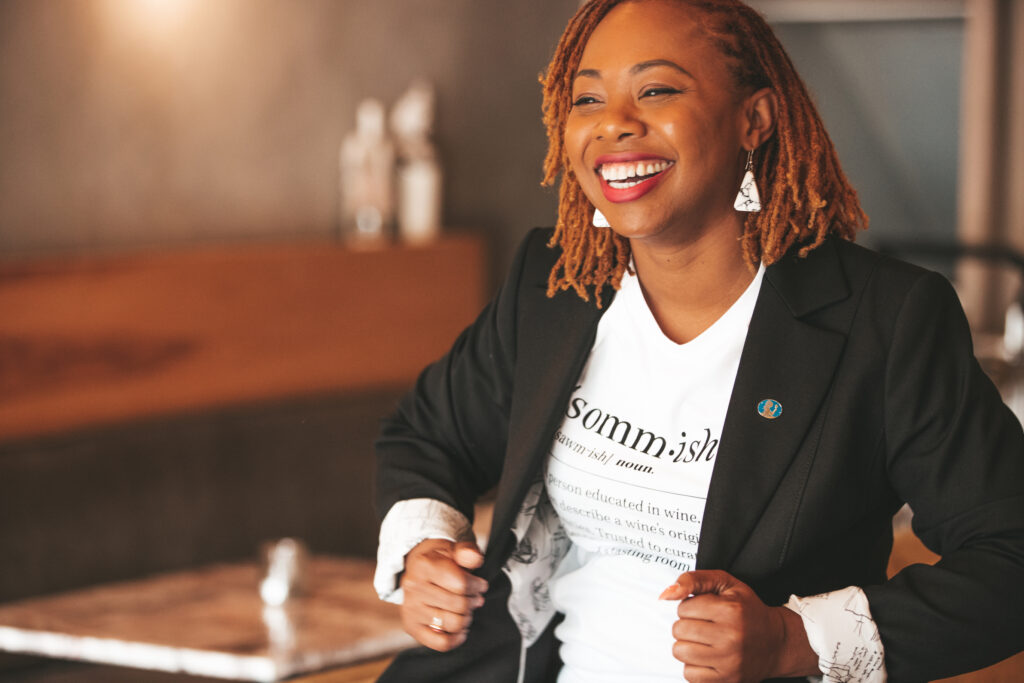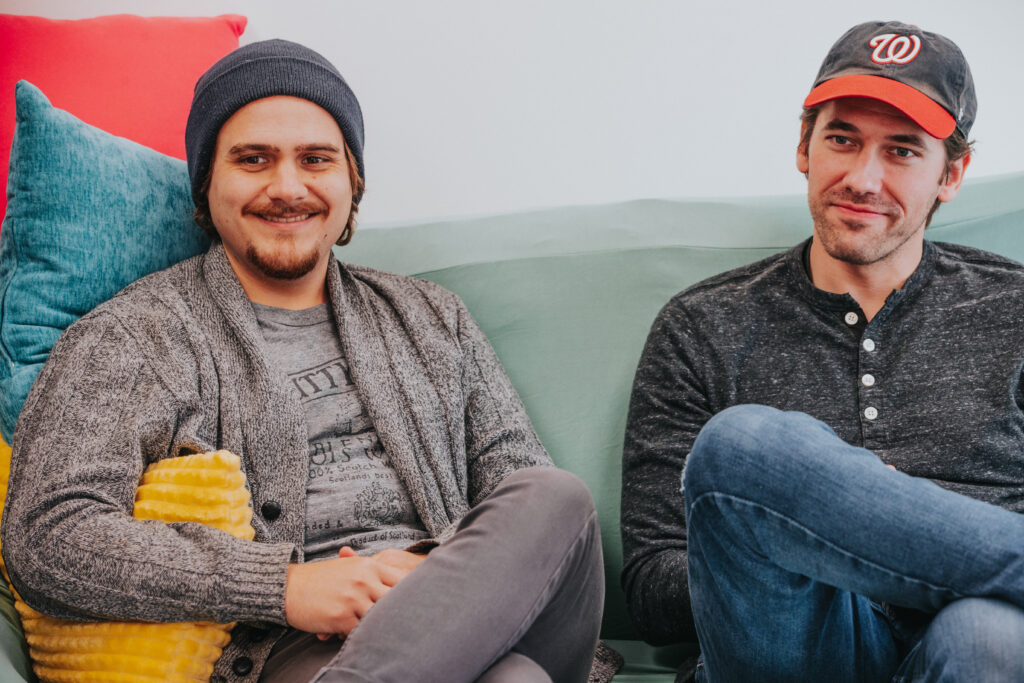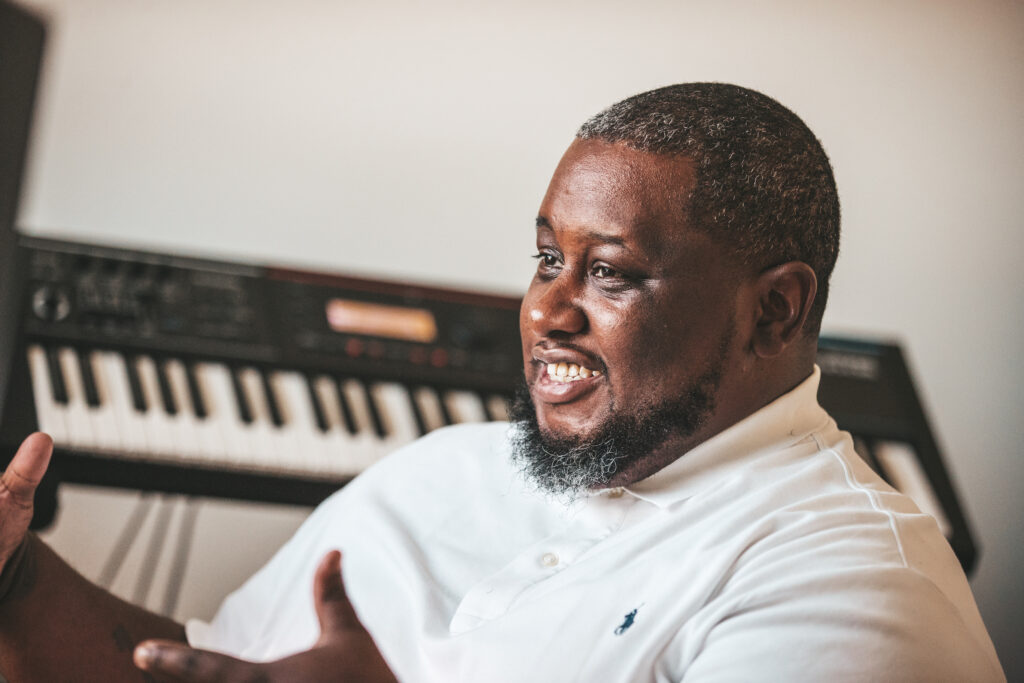“As the Birmingham creative scene continues to grow, I’d love to see local interest/support continue to grow so artists in Birmingham and surrounding communities can continue to exist and influence the city/state’s cultural development.”
Photographer and performance/installation artist Jenny Fine’s cycloramic installation Flat Granny and Me: A Procession in My Mind will be presented this weekend and next at Stephen Smith Fine Art, located in a silent-film era theater in historic downtown Fairfield. Inspired by her family’s stories and the landscape of their rural Alabama farm, Fine crafts images and environments that provide the viewer with an arresting sense of place and personal history.
Flat Granny and Me is an interdisciplinary piece, but photography is certainly central to the piece and to your work as a whole. At what age did you start taking photographs and were you particularly inspired by anyone or anything?
My older sister and I were each given Fisher Price Kodak cameras for Christmas when I was about six years old. A royal blue rectangle with black rubber bumpers and a yellow shutter release, black woven leash and detachable flash cartridges was my introduction to the camera. That was the beginning of my love of photography, but it wasn’t until I moved to China in 2001 that I actively began to view the world around me through the viewfinder. Up until that point, aside from a high school trip to Cancun, I had never been out of the states. Hardly even out of the South. Before I left, my mother — who has never flown on a plane, and had never ventured outside the Mason Dixon Line except for a 2010 trip to Columbus to view my MFA exhibition at The Ohio State University — bought me a REAL camera before I left to teach English at the University of Geosciences in Wuhan, China. During that year abroad, I bought a lens that opened up for me a whole new way of seeing the world. From that point on the camera went with me on most of my travels. My year in China took me totally outside of my place in the world. I developed a stronger sense of self and the courage (despite my parents’ concerns for my future) to pursue a career as an artist.
Even before all that, my grandmothers were a source of inspiration and identity for me. They were models for all the things I could do and be in life. Their steady influence is a continual source for my creative process. My sisters and I spent much of our childhood at our grandmothers’ houses, especially in the summers. These beautiful days were spent drawing and painting, playing the piano (which I never really learned to do), learning etiquette, hosting tea parties, singing, designing and making costumes, staging wedding ceremonies, foraging and boiling down anything we found in the yard to see what color dye we could make, sewing, and endless swimming. I can still picture my Grandmother Fine (Flat Granny) trudging up the backyard hill to toss a huge watermelon into the pool full of bobbing and splashing children, and returning with a tray of Dr. Pepper and Oreos to be eaten under her yellow floral umbrella with white tassel trim while listening to her telling of stories of the Nazis in Germany or invading the shores of Normandy.
Though I knew that my grandmother taught Geography at the local community college, it didn’t quite register at the time that these stories were real – my grandmothers’ voices illuminating the past, marking the tempo of the flicker of images that their words sparked in my mind. This is the true origin of my artistic practice.
My Grandmother Fine was a refined, multi-talented college professor. My Granny Caldwell was the epitome of an industrious and creative, rural Alabama homemaker; the master of “making-do” and to whom I owe much of my aesthetic sensibilities. In her home, a stack of plastic “John Doe” credit cards received through the mail become plate scrapers. Bits of string, scraps of fabric, and discarded eggshells from my Granny and Papa’s shared breakfasts over the last five years of their life together were cleaned, saved and repurposed – awaiting their new life.
Your work has a strong sense of experimentation, playfulness, and humor, combined with an obvious reverence for family and place. How have these themes evolved for you over time?
I’m thrilled that you find the humor in my work. Many family narratives that I’ve chosen for my family to reenact for the camera are stories of loss or death. That subject isn’t often considered humorous, but there is something about the progress of time that gives you perspective. It allows you to look back on an experience and fantasize about the absurdity of it all. In a way I think a strong motivation for me to make art is to make sense of the past, particularly as a Southerner and the stories we inherit and the sentiment we perpetuate or pass on with each retelling.
Flat Granny incorporates not only contemporary and historical photographic techniques but also moving image, installation, performance, and storytelling. It’s more of an experience than an exhibition. What led you to begin combining these elements with your photography?
My discontent with the limitations of photography motivated me to explore and incorporate other forms of making into my practice. Gay Burke was my undergraduate photography professor at The University of Alabama. I remember her patiently listening as I struggled to explain why the photograph wasn’t enough. It wasn’t able to articulate the visual experience of staging photographs on the farm with my family.
In studying art, we learn that each medium has an inherent history and language. I begin with the photograph because of its ability to record reality and freeze time. I’m drawn to the photograph for the magic that’s historically linked to this mystical process. The camera functions to freeze time, but it also flattens space and crops out so much of the sensory experience of my family’s performance for the camera. I began seeking out other forms of making that could convey more of this experience to the audience.
It was no longer enough for the viewer to stand before the photograph. I wanted the viewer to experience standing inside of the photograph/the memory, and walk around inside the story, not fully knowing what has happened or what might happen next. My desired outcome is that the viewer will enter the space of the photograph and leave the installation with the memory of this experience living on.
You are also an instructor in Interdisciplinary Studio & Foundations in the UAB Department of Art & Art History. Some of your students are creating installations on the second floor of Stephen Smith Fine Art in conjunction with your show. Can you tell us a bit about their work?
I’m teaching a collaborative installation course this semester called “The Collective Narrative.” In this course, fifteen art majors collaborated to create five experiential installations on the second floor of the gallery. Over the course of the semester, the students researched their projects, which explore issues of the body, gender, family/home, and the history of Fairfield. The students have worked closely with Paul Barrett, Director of Stephen Smith Fine Art, to gain real-life experience working with a commercial gallery to mount a multi-media installation. For many of the students, this will be their first multi-media installation, as well as their first public art exhibition off-campus. I hope you’ll come check out the work from these rising stars.
You returned to the Birmingham area in 2014 after working in Ohio and Germany, and you have exhibited your work around the state, as well as nationally and internationally. What characteristics of the local art scene appeal most to you? What would you like to see more of as Birmingham continues to grow?
The Birmingham art scene is a welcoming community filled with talented artists who continually reinvent themselves and their work. What I love most about the Birmingham and the Alabama art scene is the thriving intermingling of trained and outsider artists. As the Birmingham creative scene continues to grow, I’d love to see local interest/support continue to grow so artists in Birmingham and surrounding communities can continue to exist and influence the city/state’s cultural development.
Mary Oliver writes in her essay Of Power and Time: “In creative work – creative work of all kinds – those who are the world’s working artists are not trying to help the world go around, but forward. Which is something altogether different from the ordinary. Such work does not refute the ordinary. It is, simply, something else. Its labors require a different outlook — a different set of priorities.”
I hope the citizens of Birmingham will continue to value our artists and their contributions to this great community. I hope that together, Birmingham artists can rewrite the old trope of the “starving artist.”
There are four opportunities to experience this live event:
April 7 from 6:00 – 8:00 pm
April 8 from 12:00 – 2:00 pm
April 14 from 6:00 – 8:00 pm
April 15 from 12:00 – 2:00 pm
Fine will also give a talk about her work on April 9 at 1:00 pm.
All events are free and open to the public. More information can be found here.



















